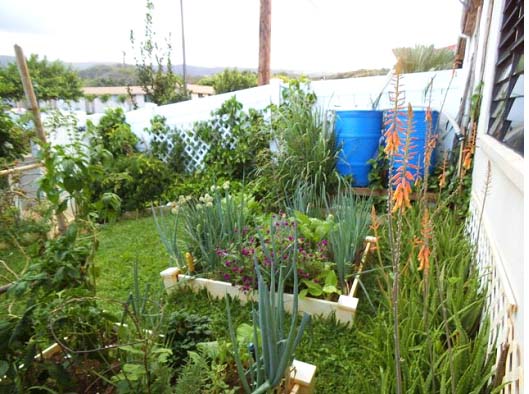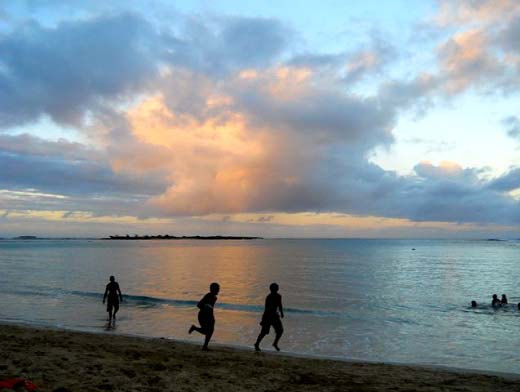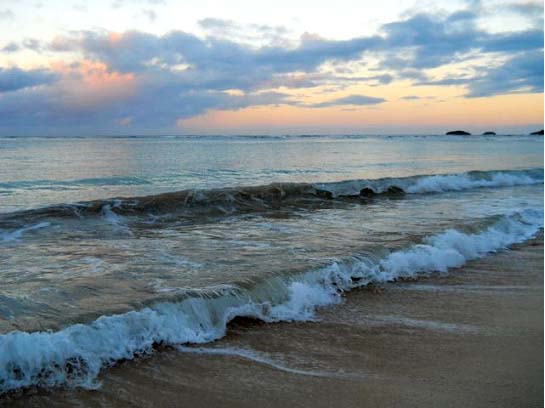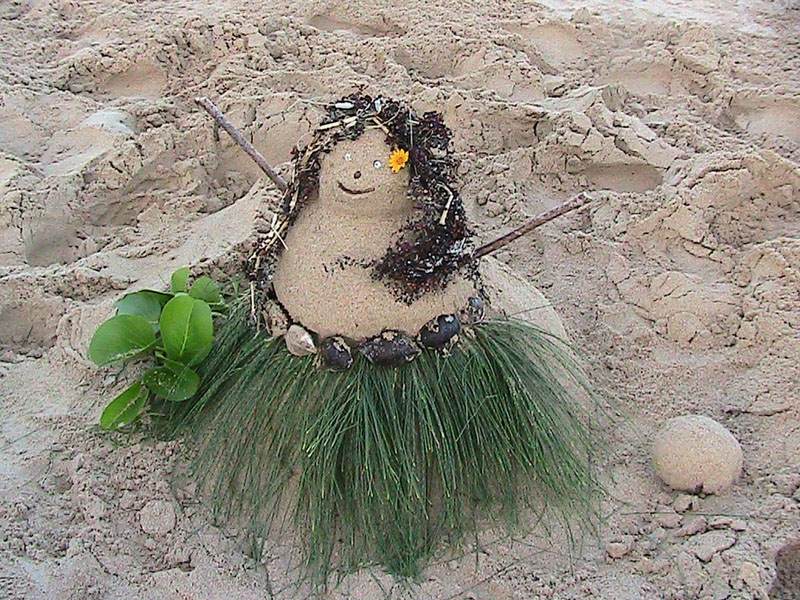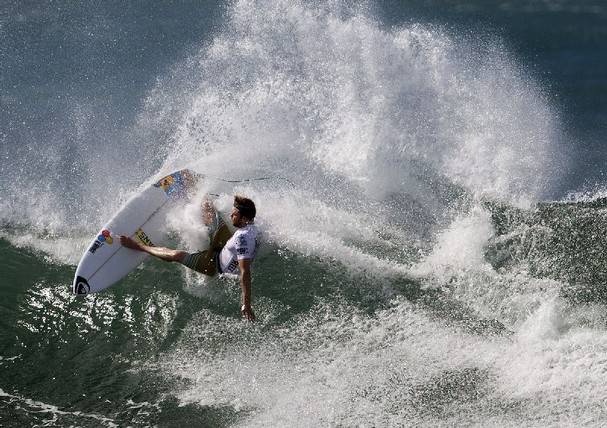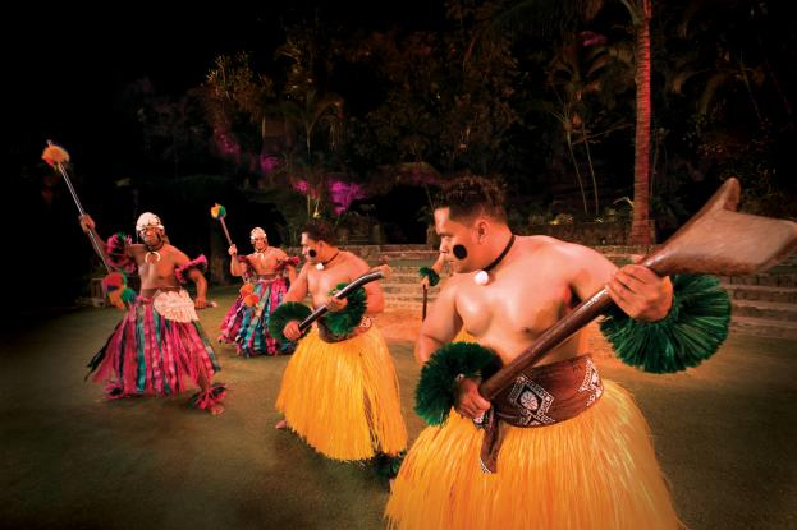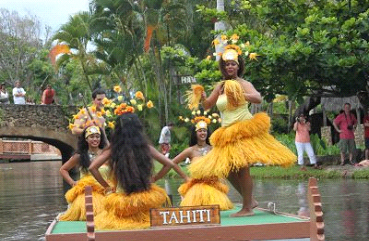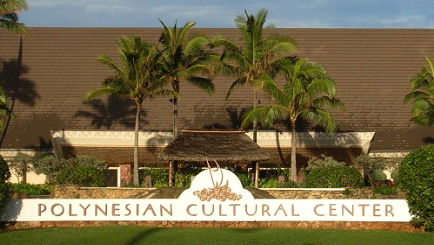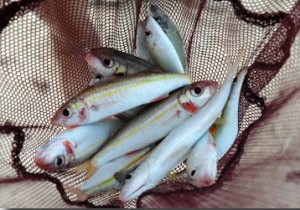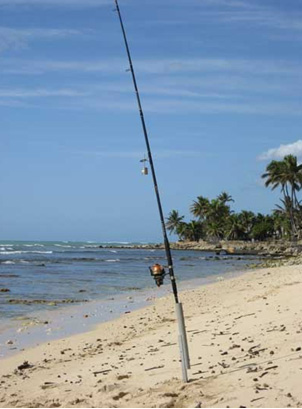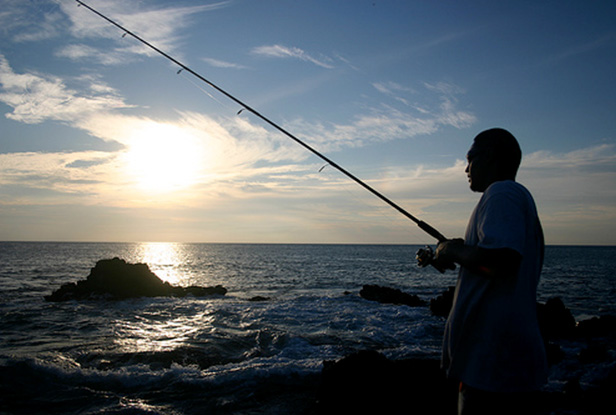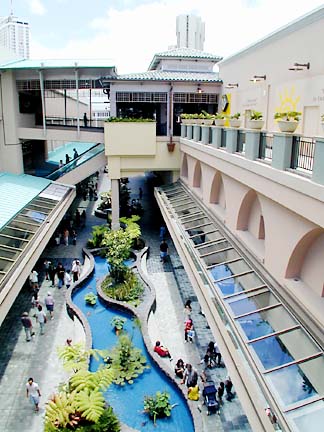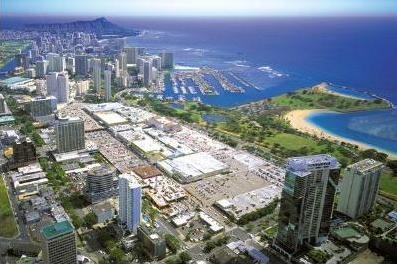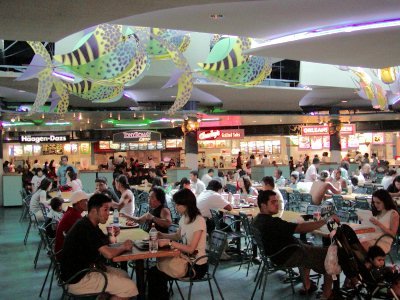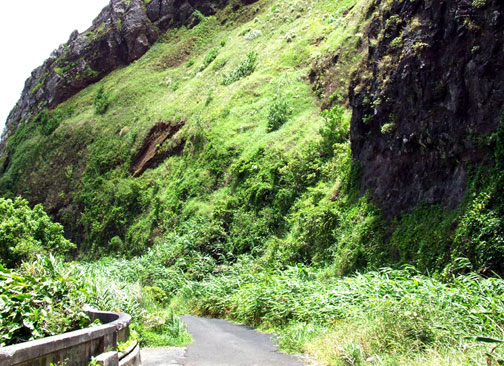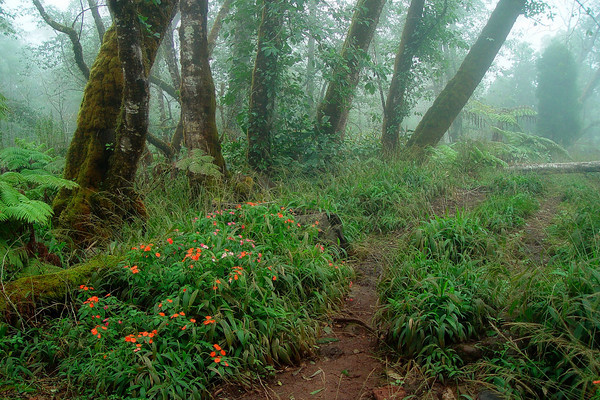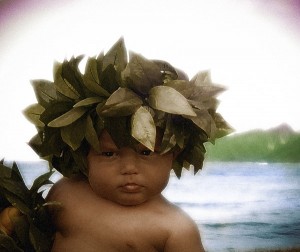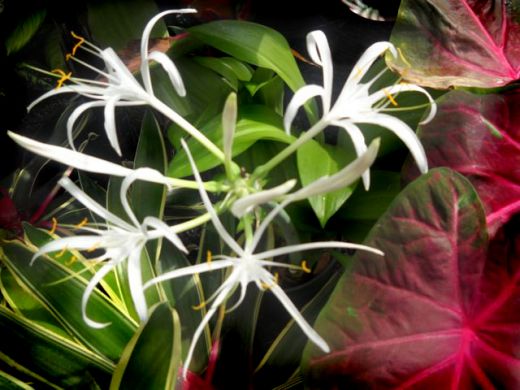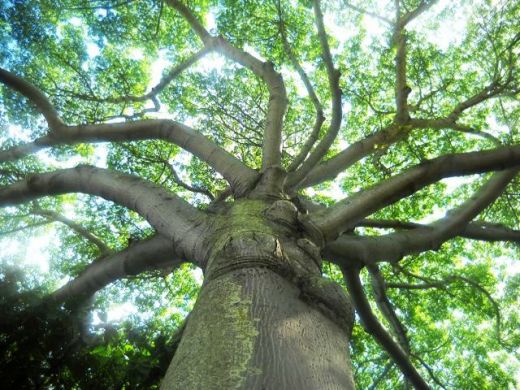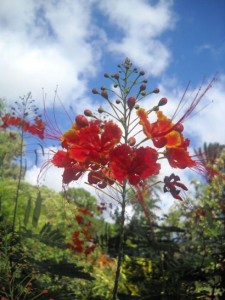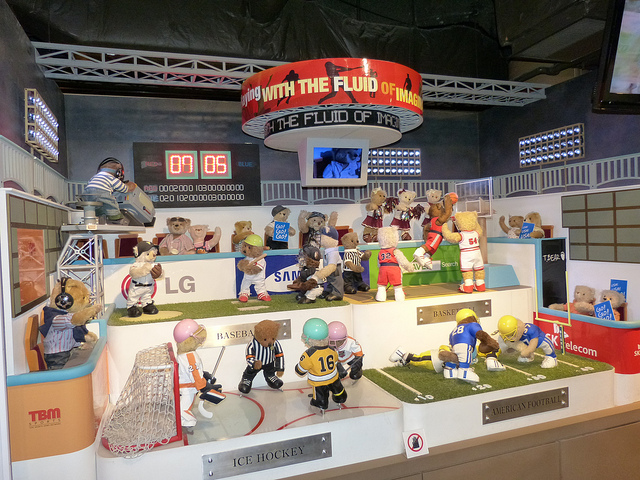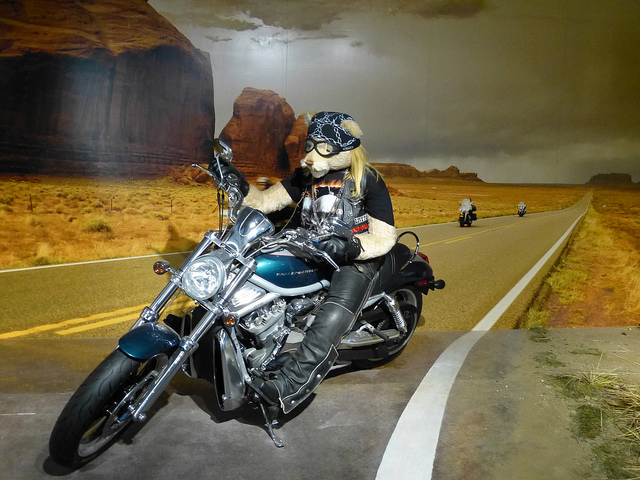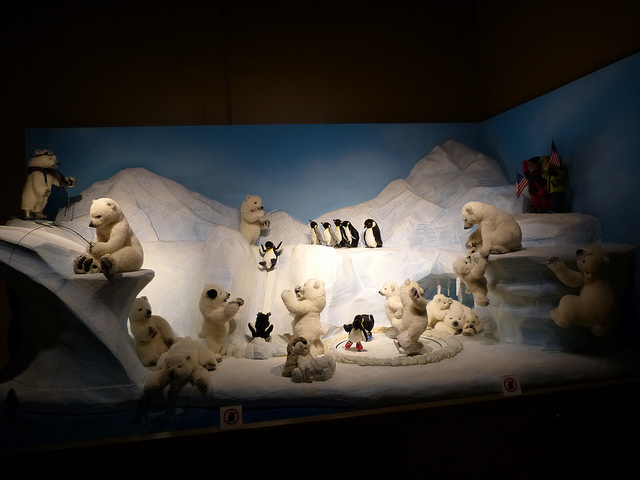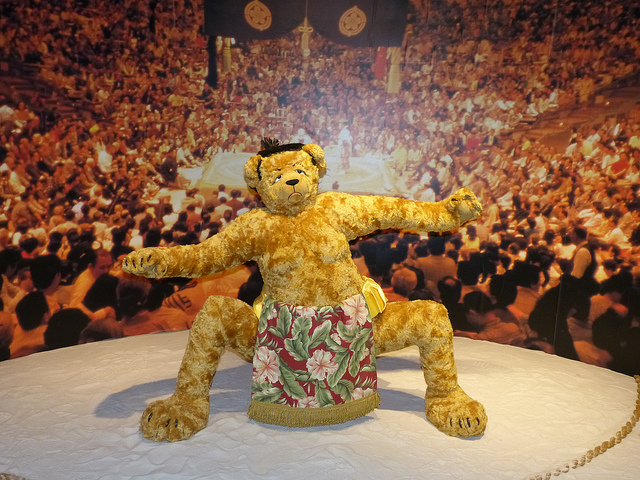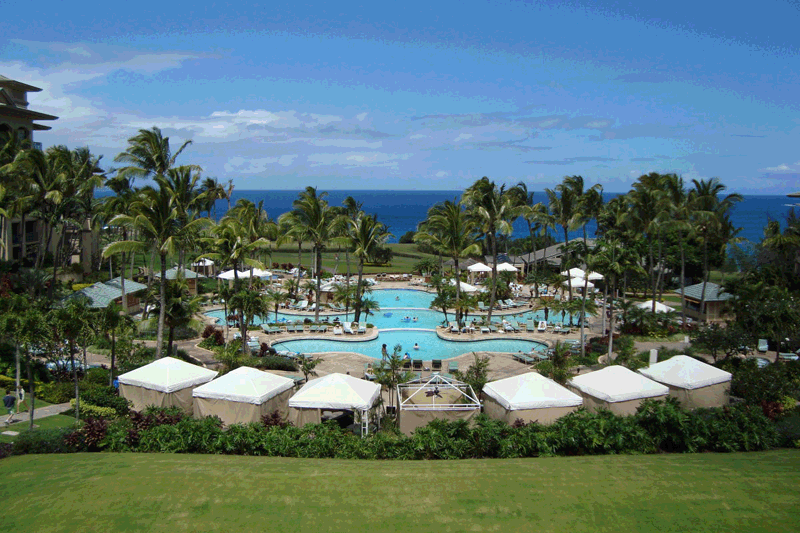Guest Post: Ruth Elayne Kongaika
Living in Paradise, there are plenty of things to capture your attention. One that is often overlooked is the Byodo-In Temple nestled deep in a very lush corner at the base of the Ko’olau Mountain range of Oahu. It is located only thirteen miles from the Honolulu Airport. It is a replica of a temple located in Japan that is over 950 years old. There are no nails or screws to hold it together. It is bound with braided ropes like the original temple.
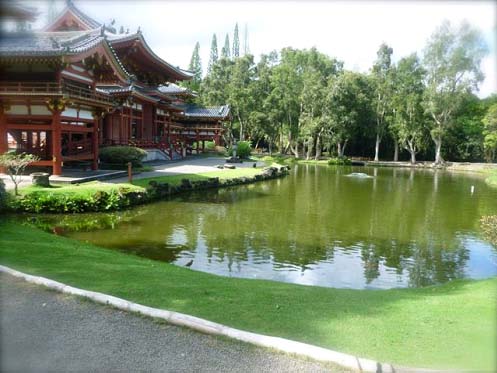 To get to the temple from Kamehameha highway, you pass through a well maintained cemetery. The temple is actually part of the cemetery, and the Buddha located in the center of the temple watches over several urns of cremated remains. Children and adults enjoy striking the bell near the entrance with a soft wooden log (shu-moku). You can hear and feel the deep sound of the sacred bell (Bon-sho). The bell is five feet high and made of brass and tin, having been cast in Japan. The sound it emits is supposed to cleanse the mind of all temptation and evil and give you a sense of peace and tranquility. This helps prepare your mind for entering the temple.
To get to the temple from Kamehameha highway, you pass through a well maintained cemetery. The temple is actually part of the cemetery, and the Buddha located in the center of the temple watches over several urns of cremated remains. Children and adults enjoy striking the bell near the entrance with a soft wooden log (shu-moku). You can hear and feel the deep sound of the sacred bell (Bon-sho). The bell is five feet high and made of brass and tin, having been cast in Japan. The sound it emits is supposed to cleanse the mind of all temptation and evil and give you a sense of peace and tranquility. This helps prepare your mind for entering the temple.
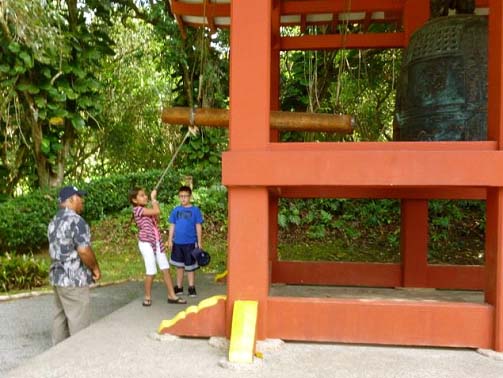 Before entering the main part of the temple (Hoo-do), you are asked to remove your shoes in reverence to deity. The impressive golden Buddha is the largest carved figure outside of Japan. It is nine feet tall and is covered by three coats of gold lacquer, lastly being covered with gold leaf. It was carved by Masuzo Inui, a famous Japanese sculptor. There are several smaller sculptures of enlightened beings surrounding the Buddha. Incense burns and fills your nostrils as you peer at the massive Buddha.
Before entering the main part of the temple (Hoo-do), you are asked to remove your shoes in reverence to deity. The impressive golden Buddha is the largest carved figure outside of Japan. It is nine feet tall and is covered by three coats of gold lacquer, lastly being covered with gold leaf. It was carved by Masuzo Inui, a famous Japanese sculptor. There are several smaller sculptures of enlightened beings surrounding the Buddha. Incense burns and fills your nostrils as you peer at the massive Buddha.
The Byodo-In temple welcomes people of all faiths. It is a place of harmony and meditation. The beautiful landscape includes a large pond and some small waterfalls. Black swans and hundreds of koi make their home in the temple grounds. Koi can live to be 100 years old and some of them are huge. An occasional peacock, frog or turtle can be spotted. You can purchase fish food at the gift shop and enjoy watching the koi feed. The temple is a Hawaii State landmark.
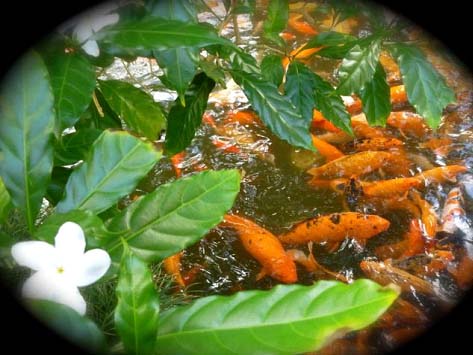 Buddhism Prayer Service is led daily by local bishops. There is also a meditation pavilion for personal use. Occasionally guest artists display and give demonstrations of their work. Sumi-e and ikebana are ancient oriental art styles which are often part of the demonstration arts shown. Also local Hawaiian arts including ribbon lei making are offered.
Buddhism Prayer Service is led daily by local bishops. There is also a meditation pavilion for personal use. Occasionally guest artists display and give demonstrations of their work. Sumi-e and ikebana are ancient oriental art styles which are often part of the demonstration arts shown. Also local Hawaiian arts including ribbon lei making are offered.
There is a small gift shop where you can find unique items, including oriental art prints, statues and even Japanese wedding gowns. A restroom is located at the back of the gift shop.
The breathtaking location of the Byodo-in Temple is perfect for wedding photos. It is not expensive or busy like many tourist attractions in Hawaii. The gardens are well kept and even the gravel is raked into a contemplative pattern. Large eucalyptus trees and bamboo align the pond. You will enjoy the peace and tranquility at the Valley of the Temple’s temple. It is considered one of Oahu’s hidden gems, and I have often taken guests there. My grandchildren truly enjoyed feeding the fish and roaming the expansive grounds.
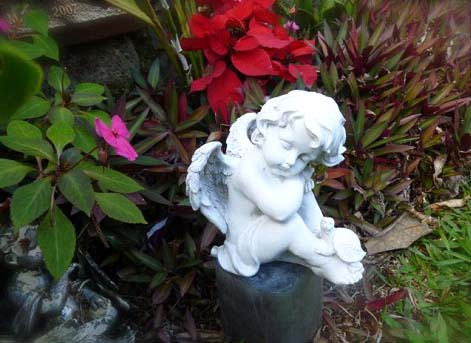 Ruth Elayne Kongaika was raised in the mainland, USA, but has been living in the South Pacific for the past forty years. She enjoys trying to capture the beauty of the islands through her photography, painting and writing. She has a blog which shares some of her art and favorite subjects at:
Ruth Elayne Kongaika was raised in the mainland, USA, but has been living in the South Pacific for the past forty years. She enjoys trying to capture the beauty of the islands through her photography, painting and writing. She has a blog which shares some of her art and favorite subjects at:
email: kongaikr@byuh.edu
